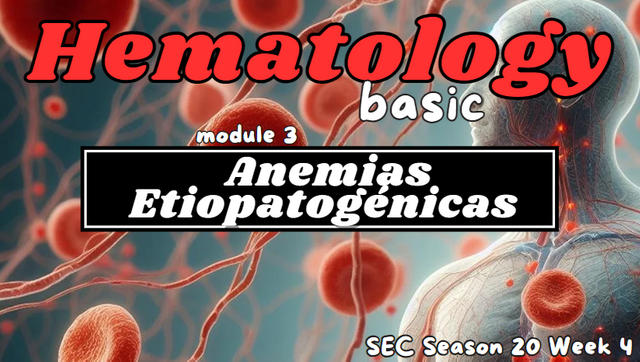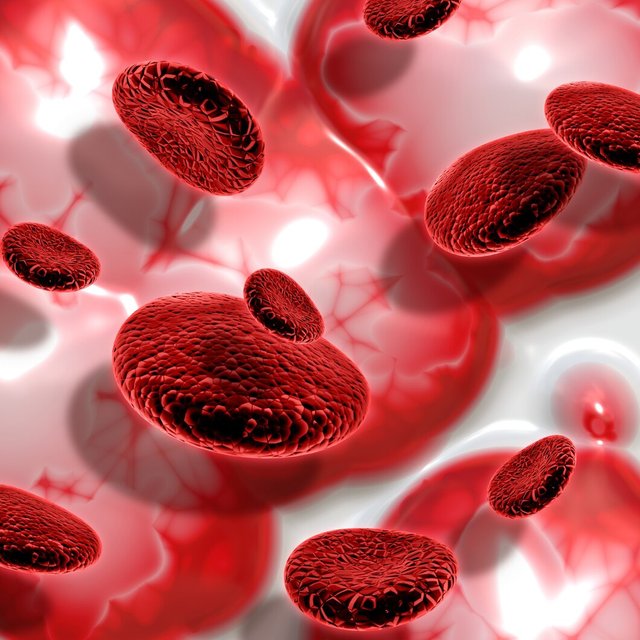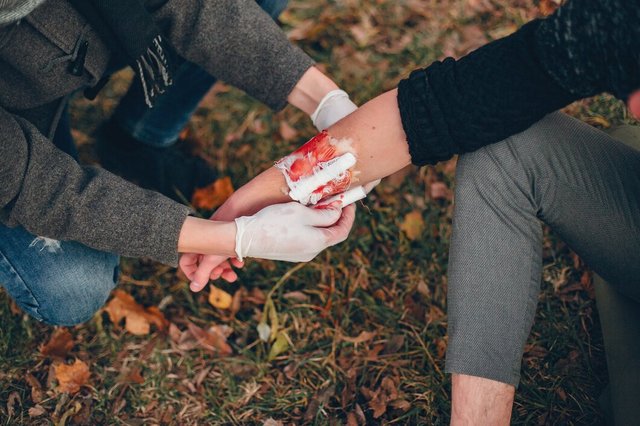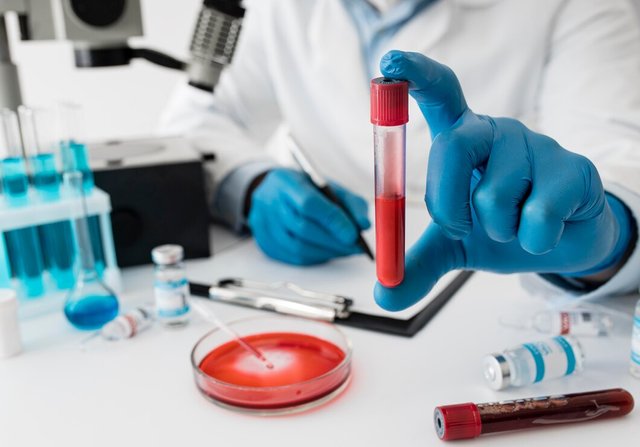
Hello Everyone!!!
I hope you all are good and doing well. We are learning and getting knowledge about hematology courses every week. Before going to start course week#4 I would like to invite @artist1111 ,@roohiasif99 and @sualeha for the contest.
Defines Etiopathogenic Anemia
it is a classification of anemia based on its cause and mechanism or processes that lead to the reduction in number of red blood cells or concentration of hemoglobin.
When the classification of anemia based on the etiology (cause) and pathogenesis (mechanism of disease development) it's reffed as Etiopathogenic anemia . Said differently,
For example,
Anemia may be due to:
- Blood loss (for example, trauma, gastrointestinal bleeding)
- Reduced red blood cell production (for example, iron deficiency, vitamin B12 deficiency)
- Enhanced red blood cell loss (e.g., hemolytic anemias)
The word etiopathogenic directs attention to the cause and the specific biological processes that cause the anemia, hence giving all-rounded enlightenment on the subject.
Make a diagram of the maturation of the UFC-E

Here's a diagram illustrating the maturation of Erythrocytes (UFC-E, or Unstable Faltering Cells-Erythrocyte) from a hematological perspective:
Erythropoiesis: Maturation of UFC-E
+---------------------------+
| Early Erythroid Progenitor |
| ( Burst-Forming Unit-Erythroid) |
+---------------------------+
|
|
v
+---------------------------+
| Normoblast (Basophilic) |
| • Large, round, and deeply |
| stained nuclei |
+---------------------------+
|
|
v
+---------------------------+
| Normoblast (Polychromatic) |
| • Decreased nuclear size, |
| increased cytoplasmic |
| volume and hemoglobin |
+---------------------------+
|
|
v
+---------------------------+
| Normoblast (Orthochromatic)|
| • Small, dense nuclei, |
| maximum hemoglobin content |
+---------------------------+
|
|
v
+---------------------------+
| Reticulocyte |
| • Young erythrocyte, |
| remnants of nucleus, |
| high RNA content |
+---------------------------+
|
|
v
+---------------------------+
| Mature Erythrocyte (UFC-E) |
| • No nucleus, flexible |
| biconcave disk shape |
+---------------------------+
Key stages in UFC-E maturation:
At start stage ,high nuclear to cytoplasmic ratio exist in early Erythroid Progenitor Large cell .
Normoblast: this stage further divided into three stages, , which reflect changes in nuclear size, cytoplasm volume, and hemoglobin content. These are
- basophilic
- polychromatic
- orthochromatic
Reticulocyte: At this stage erythrocytes with remnants of nuclei and high content of RNA.
Mature Erythrocyte (UFC-E): The final stage, it is a flexible, biconcave disk with no nucleus.
Aregenerative Anemia vs Regenerative Anemia
When the body experiences anemia (a condition characterized by a lack of healthy red blood cells). two different types of responses the bone marrow exhibits that are reffered as aregenerative anemia and regenerative anemia
| Aregenerative Anemia | Regenerative Anemia | |
|---|---|---|
| Aregenerative anemia, also called non-regenerative anemia, occurs when the bone marrow is not producing enough red blood cells to replace the ones being lost. This can happen due to bone marrow failure or suppression. | Regenerative anemia occurs when the bone marrow is responding to the anemia by producing and releasing more red blood cells, particularly immature red blood cells (reticulocytes). This indicates that the bone marrow is functioning and trying to compensate for the loss of red blood cells. The failure of the bone marrow to produce sufficient red blood cells can be due to:Chronic disease (e.g., kidney disease, hypothyroidism)Bone marrow disorders (e.g., aplastic anemia, | |
| leukemia)Nutritional deficiencies (e.g., iron deficiency, vitamin B12 deficiency)Chronic inflammation or infection. | Regenerative anemia is typically due to:Blood loss (e.g., trauma, gastrointestinal bleeding)Hemolysis (increased destruction of red blood cells, as seen in hemolytic anemias). | |
| In aregenerative anemia, the reticulocyte (immature red blood cells) count is low, indicating that the bone marrow is not responding appropriately to the body's need for more red blood cells. | In regenerative anemia, the reticulocyte count is elevated, showing that the bone marrow is actively trying to replenish the lost red blood cells. | |
| Bone marrow is not producing enough red blood cells. | Bone marrow is producing more red blood cells in response to anemia.Aregenerative: Low reticulocyte count. | Regenerative: High reticulocyte count. |
| Cause:Chronic diseases, bone marrow failure, deficiencies. | causes: Acute blood loss, hemolysis. | |
| - | - |
Give suggestions in case of bleeding

If someone is bleeding, here are some important steps in the care of the situation:
Be Calm and Observe:
Be calm and carefully note the severity of the bleeding.
If it is extensise, dial or call emergency services
Press Down:
Use a clean cloth, gauze bandage, or your hand to press down on the wound directly holding firm pressure for 5-10 minutes without rising to look at the bleeding
Elevate the Place:
If feasible, elevate the injured area above the heart to retard bleeding. This will be the situation if it doesn't cause more pain.
Clean the Wound (If Minor):
Flush small amounts of bleeding with water to remove dirt and debris.
Don't apply hydrogen peroxide or iodine directly to open wounds because it may irritate the tissue.
Apply a Bandage:
Use a sterile bandage or dressing once the bleeding slows down to cover your wound.
If bleeding hasn't slowed or stopped, don't remove the primary dressing; add more on top of it.
Tourniquet (Only for Catastrophic Bleeding):
If bleeding from a limb appears life-threatening and direct pressure above the wound (toward the torso) is not able to control the bleeding, a tourniquet must be positioned proximal to the wound
Use a tourniquet only if you are trained to do so; if used incorrectly it can cause tissue damage.
Position the Victim:
Ask him or her to lie down while being calm. This is because shock should not be experienced.
Must keep them warm by covering them with a blanket.
Seek Medical Assistance:
Even in case of heavy or persistent bleeding, you must look for professional medical assistance. One must always look for professional help if he doesn't know the level of injury. Such steps manage bleeding but professional assistance in serious wounds takes precedence.
That's all from my side and I have tried to compiled all tasks. Thanks for giving time to my post.
Best regards

Upvoted. Thank You for sending some of your rewards to @null. It will make Steem stronger.
Downvoting a post can decrease pending rewards and make it less visible. Common reasons:
Submit
Learned a lot from your post. Such an in-depth discussion on issues like anemia is really needed. The way you have presented the matter is admirable. Good luck for the contest.
Downvoting a post can decrease pending rewards and make it less visible. Common reasons:
Submit
Congratulations on bringing a quality content. You have earned a positive vote from team 2, and it is delivered by @ashkhan.
Many Blessings...🙏🏻
Downvoting a post can decrease pending rewards and make it less visible. Common reasons:
Submit
Thanks @ashkhan for the support ♥️
Downvoting a post can decrease pending rewards and make it less visible. Common reasons:
Submit
It is interesting how anemia can be classified in different ways according to various indices, we have already seen the morphological classification, now according to the IPR it can be woow :0
Is good to learn something new every week and more about common cases we see in daily life.
Have a nice day!
Downvoting a post can decrease pending rewards and make it less visible. Common reasons:
Submit